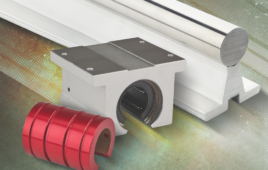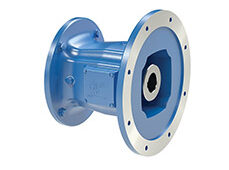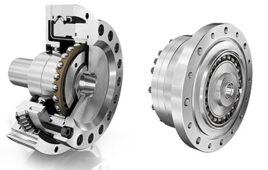At first glance, ball bearings are relatively simple mechanisms. However, an analysis of their internal geometries reveals that they are quite complex. For example, the ball to raceway conformity, the radial play, and the number of balls all impact the ability a ball bearing to support loads under a variety of conditions. Typically, ball and other rolling element bearings are designed and assembled with a slight amount of internal looseness between the rolling elements (balls), and the raceways. This looseness results in both radial play and axial play in the bearing.
It should be noted that due to the nature of their design and construction, the internal geometry of needle, roller, and tapered roller bearings is quite different than that found in ball bearings. For example, tapered roller bearings are somewhat unique in that the clearance within the bearing is adjusted at the time of assembly. Radial play and
running clearance or of primary importance an all rolling element bearings. In this Technical Information Sheet (TIS), the discussion of contact angle, deflection, end play, and preload applies primarily to ball bearings.
Definition of Radial Play in a Ball Bearing
Radial play, or internal clearance, is the internal radial looseness in a bearing and is the measured value of the total radial movement of the outer ring with respect to the inner ring in a plane perpendicular to the bearing axis. Ball bearings are assembled to radial play values depending upon the desired range. The radial play is determined by the actual raceway diameters and ball diameter.
Radial play can be verified on assembled bearings using specially designed gages. When measuring the radial play, the bearing is subjected to a standard gage load to ensure full contact between all the bearing components. With regard to miniature and thin section bearings under such a load, the measured value is larger than the stated value for radial play. This is due to elastic deformation. Compensation factors are used in these cases.
Definition of Axial Play in a Ball Bearing
Axial, or end play, is the maximum relative axial movement of the inner ring with respect to the outer ring. The end play is directly related to the radial play of the ball bearing. In most part numbering systems, axial play is not normally specified.
There is often confusion with “looseness” and precision level. Radial play is specified independently of ABEC tolerance classes for rings. With ball bearings, in most cases, the internal looseness should be removed in the assembly process by applying an axial preload across the pair of bearings. This can be accomplished with shims, springs, take up nuts, and/or other assembly techniques. Axial preload is also an important design parameter that affects both performance and life. Preload is explained in further detail in a separate Technical Information Sheet (TIS).
Contact Angle in a Ball Bearing
When ball bearings are axially preloaded a contact angle is established. The contact angle is the angle between a plane perpendicular to the bearing axis and a line joining the two contact points between the ball and the inner and outer raceways. The initial contact angle is the contact angle when the bearing is subjected to the minimal axial force or load necessary to remove the looseness resulting from the radial play. Additional applied axial loads will increase the contact angle further. The greater the value of radial play in the bearing, the greater the resulting contact angle will be.
In most bearing applications, radial play, from a functional point of view, is more critical than axial play. As a result, it has become the standard purchasing specification.
Filed Under: Bearings





Tell Us What You Think!